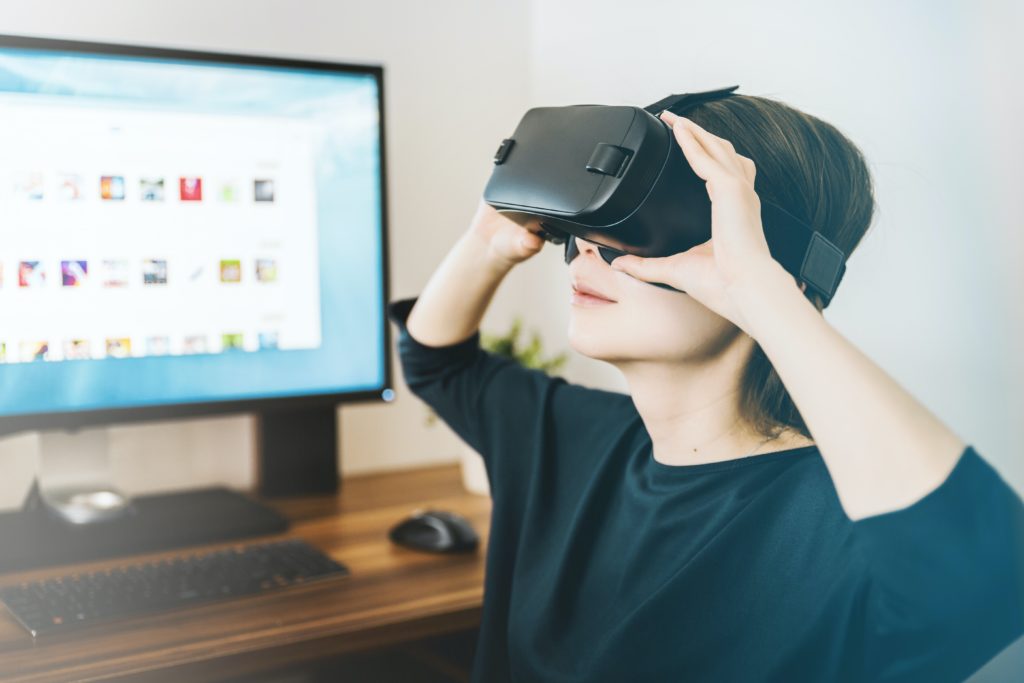Related Articles
Virtual Reality Shopping is a Real Frontier of Opportunity
The next generation of online shopping platforms which are set to significantly disrupt the status quo are based on augmented (virtual) reality.
In today’s online world, most companies are primarily concerned with their websites design and their organisation’s social media strategy, which for most is about engaging with customers on platforms such as Facebook and Instagram. Yet, the nature of customer engagement and the associated world of online shopping is rapidly evolving and changing.
The next generation of online shopping platforms which are set to significantly disrupt the status quo are based on augmented (virtual) reality. Virtual Reality (VR) shopping is no longer the realm of science fiction, but a commercial reality. Gartner predict that by 2020[1], 100 million customers will shop in augmented reality. Furthermore, they predict that one in five global brands will enable augmented reality shopping by the end of 2017. For organisations, this trend represents a significant commercial opportunity and one which they should be thinking about taking advantage of.

So what’s new in a virtual reality shopping environment? By being three dimensional, VR shopping represents an opportunity for greater customer engagement vis a vis traditional websites as it enables customers to fully explore product features and obtain additional information to help them with their buying decisions. For example, customers can try on makeup, clothes, shoes, visualise how furniture would look inside their home and get product information while they browse shelves. Furthermore, payments are seamlessly integrated into these environments, making it easy for customers to traverse from browsing to buying. Therefore, payment providers will play an important role in maximising the commercial potential of these platforms.
But won’t customers require one of those fancy VR headsets, costing hundreds of euro to participate? The answer is no. Let’s examine the model developed by Alibaba, one of the world’s largest retailers. Customers can avail of Alibaba’s Buy+ virtual shopping experience, simply by purchasing a cardboard VR headset, which costs 15 cents[2]. Customers simply slip their smartphone into the headset to enable them to browse products from leading department stores. In Alibaba’s promotional video, released via twitter[3], a customer is taken from their office in China to Macy’s in New York where they browse the aisles and examine the products on offer. The customer is met by a Macy’s staff member, browses the products, selects a handbag and pays for it, without even having to enter any payment information. This is a result of Alibaba’s Buy+ product being integrated with Alipay, an online payment platform. The experience is very different from your traditional online shopping experience. In VR shopping, you are immersed in the environment, and the experience is evolving towards one where this experience is similar to actually physically being in store.
So what does this emerging VR shopping trend mean for commercial organisations?
The ability to reach a worldwide audience is not new and one which can be achieved with a traditional website. However, virtual reality shopping is different. It enables you to immerse a customer from anywhere in the world in your store. Customers can meet a representative, walk the aisles, browse/review/try products and pay for them.
This presents opportunities for companies including design and IT companies; commercial and payment organisations, all of whom have a potential role to play.
This emerging market will represent opportunities for design and IT companies to develop these multisensory, immersive and interactive platforms for commercial clients. For companies, management need to consider that investing in their virtual real estate is potentially now as important as their physical real estate as it represents an opportunity for companies to get even closer to their customers, to enable these customers to immerse themselves in the company’s products and services. For companies, these augmented reality worlds present significant cross selling opportunities.
One fact is unescapable. Virtual reality shopping will become a reality in the years ahead. Now is the time for organisation’s and their managers to plan to ensure that they are in the position to avail of the emerging opportunity and that their organisation’s become the disruptor’s rather than the disrupted.
[1]http://www.gartner.com/smarterwithgartner/gartner-predicts-a-virtual-world-of-exponential-change/
[2]https://www.forbes.com/sites/helenwang/2016/11/06/how-alibaba-will-use-the-worlds-biggest-shopping-day-to-transform-retail/#6cd65bea6d4e
[3]https://twitter.com/AlibabaGroup/status/789086429330575360
Dr. Philip O’Reilly is the Programme Director for the IMI MBS in Digital Business and a Senior Lecturer at University College Cork.
Philip has delivered keynotes and workshops to numerous multinational companies and at leading practitioner events including the Banking & Payments Federation of Ireland National Conference.
He recently received the Stafford Beer Medal in recognition of the most outstanding contribution to the philosophy, theory and practice of Information Systems (IS) from the Operational Research (OR) Society at an Awards Ceremony.





